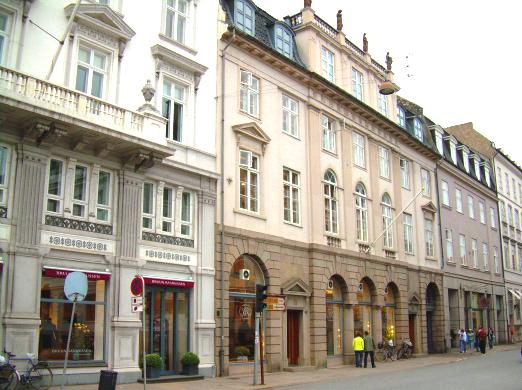An oil painting by the recognised Danish artist Carl Vilhelm Holsøe caused alarm bells to ring when it was recently offered for resale at Christie’s in New York, Politiken reports.
The picture, which had been sold by Lauriz.com in Odense for 74,000 kroner in the summer of 2016, turned out to be one of seven works stolen from a house near Kolding in 2000.
As part of a standard security check, Christie’s consulted the London-based Art Loss Register, which is the world’s largest private database of stolen art.
Most of the world’s biggest auction houses in the world subscribe to it, but no Danish ones.
A murky business
This is just the latest in a series of incidents in which Danish auction houses have been found guilty of selling stolen art.
“It calls into question one’s belief that things are all above board when you as a customer – in good faith – can buy stolen works at auction and, by doing so, be guilty of handling stolen goods,” Søren la Cour Jensen, the head of the International Council of Museums, told Politiken.
READ ALSO: Danish coin could fetch record auction price
Nina Neuhaus from the Art Loss Register put it more bluntly.
“If the Danish auction house had subscribed to the register, using a simple search in our database they would have found the picture and avoided making an illegal sale,” she contended.
Subscribers to the database comprise 105 auction houses worldwide and they are able to check all works valued at over 1,500 euros. It costs around 3 euros – or 22 kroner – per search.
Last year, the register handled around 150 cases concerning stolen works of art – found by searching on their database. Three out of four were found at auction houses that subscribed to the service.
Blame it on the police
Mette Jessen of Lauritz.com told Politiken that the stolen pictures were “not on the auction house’s ‘watch-out list’”, which is a list of stolen works. She emphasised that the auction house had been in touch with its contact person at the police, but was informed that the picture was not on the police register. It also checked the vendor’s ID.
“We recommend that all our experts use all the checking facilities available, including the Art Loss Register, Find Stolen Art and Stolen Art FBI. However in this case, it was not checked on the Art Loss Register because it was a Danish picture and because the police did not have it on their register,” Jessen said.
Not the only ones
Back in 2011, Lauritz.com sold a stolen painting by Anders Moseholm, and last year, a coffin plate was offered for sale that had been stolen from Esbjerg Museum in 1977. There have also been a number of cases involving stolen and fake designer furniture.
It is not only Lauritz.com that has problems. The prestigious firm of Bruun Rasmussen have been involved in several instances of selling stolen art. Two years ago, three Salto vases that had been stolen from Trapholt Museum were sold for several hundred thousand kroner.
In the aftermath of the sale of the stolen painting, Lauritz.com is considering whether to subscribe to the database, the auction house told Politiken by mail.













